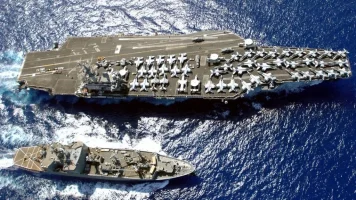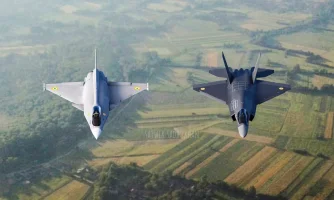- Views: 3K
- Replies: 8
India's strategic naval capabilities are poised for a significant enhancement as the Indian Navy prepares to commission its third domestically built nuclear-powered submarine carrying ballistic missiles (SSBN) later in 2025.
This development, expected to be followed by the induction of a fourth submarine in 2026, marks substantial progress in strengthening the sea-based component of India's nuclear triad.
To support this growing fleet, which includes the operational INS Arihant and INS Arighat, the Navy and associated defence maintenance facilities are focusing intensely on achieving high levels of operational availability.
Sources closely involved with naval strategic planning indicate a specific objective: ensuring that at least 80% of the SSBN fleet is ready for immediate combat deployment if required.
This readiness rate aims to permit the continuous deployment of two submarines at sea, underpinning India's stated nuclear doctrine of possessing a credible second-strike capability.
Such a capability is vital for nuclear deterrence, assuring retaliation even if attacked first. The overall command and control of these strategic assets fall under India's Strategic Forces Command (SFC).
Furthermore, the Indian Navy has developed contingency strategies for situations demanding increased vigilance. In scenarios involving heightened threat levels, plans are in place to deploy up to three SSBNs concurrently.
This capacity significantly boosts the survivability of India's underwater nuclear deterrent and demonstrates the Navy's advancing expertise in managing sophisticated operations involving nuclear assets.
While advanced plans for the next generation of larger and potentially more capable S5-class SSBNs exist, these future platforms are projected to be more than ten years away from entering service.
Consequently, the Navy's primary strategic focus for the upcoming 15 years will be on effectively operating and maintaining the fleet comprising the four Arihant-class SSBNs (S2, S3, S4, and S4*). The third boat, designated S4, reportedly commenced sea trials in late 2024.
Maintaining the targeted 80% operational readiness is a complex undertaking. It requires consistent, high-quality maintenance cycles, reliable logistical chains, rigorous crew training programs, and continuous readiness assessments.
Achieving minimal downtime between patrols necessitates close collaboration and integration between naval fleet commands, defence shipyards responsible for upkeep, and specialised technical support units.
India's current Arihant-class SSBNs provide a formidable and survivable deterrent platform, capable of launching nuclear-tipped Submarine Launched Ballistic Missiles (SLBMs) like the 750-km range K-15 Sagarika and the 3,500-km range K-4.
With the addition of the third and fourth submarines in the near future, India moves closer to establishing a robust Continuous At-Sea Deterrence (CASD) posture, mirroring the practices of other major nuclear powers who maintain constant, undetectable SSBN patrols.


